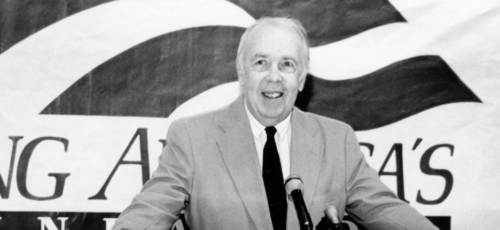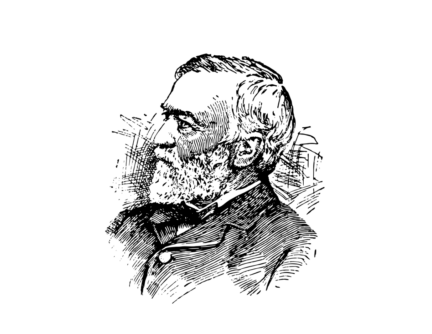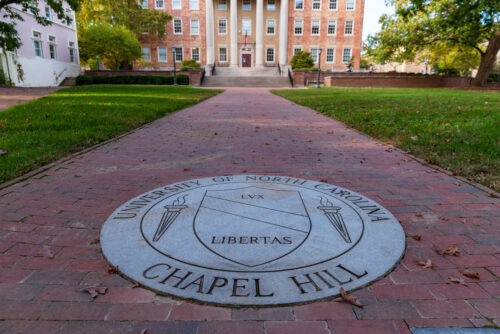Wired has gone through several editors in its twenty-year history. The magazine began as a hard-core libertarian magazine that, fattened with ads from the tech boom of the 1990s, always took several hours to read. The Wired in the Louis Rossetto era was one that prided itself on gigantic articles, such as one by Neal Stephenson on transatlantic cables that took up ninety-seven pages when Stephenson put the piece in a book of his collected nonfiction. Probably the most important article of the Rossetto era was Ed Regis’s 1996 profile of Economist Julian Simon. Bjørn Lomborg has said that this exposure to Simon’s ideas helped inspire him to write The Skeptical Environmentalist and other important books.
After some short-term replacements, Chris Anderson became editor. Under his editorship, Wired was less pro-market but still a solid publication. This year Anderson left to start a company, and the magazine’s art director, Scott Dadich, succeeded him.
Dadich likes stunts. Some, such as the crossover issue with Bon Appetit, were all right. The December issue, allegedly edited by Bill Gates, also has its moments, even though it is in effect an infomercial for the Gates Foundation.
Gates must have visited the Wired office at least once, because we have a photo of him pointing at a galley and surrounded by the magazine’s editors. And some opening features provide Fun Facts About Bill, including that the great man still reads printed books! You know, the ones on paper! That’s because Gates likes to scribble in the books he buys. You also learn which Seattle junk-food places (Burgermaster and Dick’s Drive In) to go to if you want to Eat Like Bill.
There are also sections of the magazine in which Gates seems to have exercised little control. One of them, an “answer man” column by Jason Tanz, has this question: “I’m newly rich—and swamped by charity requests. Can I ask to be left alone until I retire?”
Tanz interviewed Laura Arillaga-Andreessen, who created the Stanford Center on Philanthropy and Civil Society, who advises that “if you do not understand the tangible meaning of your gift, then your gift is not as meaningful.”
Now I’m sure Ms. Arillaga-Andreessen is a highly credentialed professional who delights in shattering the idealism of the next generation of program officers by teaching them that instead of limitless possibilities, only a narrow range of choices in grantmaking is acceptable. But I don’t know what she means. Perhaps someone certified in nonprofit management can translate her thoughts into a form uncredentialed history majors like me can understand.
Much of the issue chronicles the Gates Foundation’s greatness. As editor Dadich notes in his editorial, Gates “is in what might be the most incredible second act in American history,” a statement that can only be written by someone who knows nothing about Andrew Carnegie, John D. Rockefeller Sr., or John D. Rockefeller Jr. “Bill Gates has not just reinvented himself—he has reinvented philanthropy.
Well, how has Gates reinvented philanthropy? Does he make grantees submit their applications in Sanskrit or pig Latin?
One answer comes from an interview with Paul Farmer, who splits his time between the Gates Foundation and Harvard Medical School. “We have to design a health delivery system by actually talking to people, and asking, ‘What would make this service better for you?’ As soon as you start asking, you get a flood of answers.”
Now the idea that the best way to help the poor is to talk to them and ask what help they need may be revolutionary in the Harvard Medical School. But I learned this is the best way to help the poor by talking to Cicero Wilson, then of the American Enterprise Institute, in 1985. Wilson and his friend and ally, Robert Woodson, are commonly thought of as black conservatives, but in case conservatism would cause Dr. Farmer to break out in hives, let’s just call it good philanthropic practice.
Some of the reporting in this issue is interesting. Matthieu Atkins profiles Gates-funded vaccinators who have to inoculate against polio in some of the world’s harshest regions, such as Taliban-controlled Afghanistan. Dayo Olopade profiles Bridge International Academies, which runs 100 private schools in Kenya and which provides everything to set up a school, from the concrete to the teachers to the scripts the teachers work from because the academies use a variant of Direct Instruction. I also learned from the academies’s informative website (bridgeinternationalacademies.com) that they aren’t nonprofits, but in fact are competing in the market as for-profit entities, although their investors include the quasi-philanthropic Omidyar Network.
Gates himself has two pieces in the issue. The main piece, which doesn’t appear to have a title (although the table of contents lists it as “I Believe”) is the longest expression of Gates’s philanthropic beliefs I’ve seen, and of course has to be taken very seriously. If I were teaching the history of philanthropy, I’d assign this article with Andrew Carnegie’s “Gospel of Wealth” and invite the students to compare and contrast. I’ll leave the analysis of Gates’s piece for another time, but it should be noted that Andrew Carnegie never felt the need to write such sentences as “I am a little obsessed with fertilizer.”
Gates and Bill Clinton are both interviewed by Wired editor Steven Levy. It would take a great deal to make me feel sorry for either Gates or Clinton. Nonetheless, Levy accomplishes this feat with this amazingly stupid question:
“No one in the US wants anything like the political system in China, but sometimes I hear people wistfully compare our situation to one in which a totally empowered engineer like President Xi Jinping can make a huge difference. Meanwhile, by some metrics, the United States is losing ground as a global technology leader. Is the era of American exceptionalism coming to an end?”
Well, that’s what we need! The man on the white horse! Well, Mr. Levy, there’s a reason why President Xi is “totally empowered.” He’s a communist. As Mark Hemingway noted in an excellent cover story in the Weekly Standard, China currently employs two million people whose job it is to suppress and censor free speech and pro-democratic sentiments. And as Gordon Chang noted a decade ago in his fine book The Coming Collapse of China, China at that time had several hundred thousand professional teachers of Marxist-Leninist doctrine.
As I noted in an earlier post, the Gates Foundation does many good things. But like too many large foundations, this issue shows that the organization looks into the mirror every day and admires its immaculate perfection. Drillers looking for new sources to frack might well visit the foundation’s Seattle headquarters. There’s a lot of natural gas seeping out of the Gates Foundation that could be turned into productive energy.







I second Monty’s high praise. And re China & those who (a) pine for its governing glories and (b) ignore its actual economic failures, including the high speed trains fantasies, see an earlier Philanthropy Daily piece: https://philanthropydaily.com/democracy-now/
Great piece, Martin. I laughed out loud more than once.
But can this truly be Martin, who has never been seen before sporting a tie?